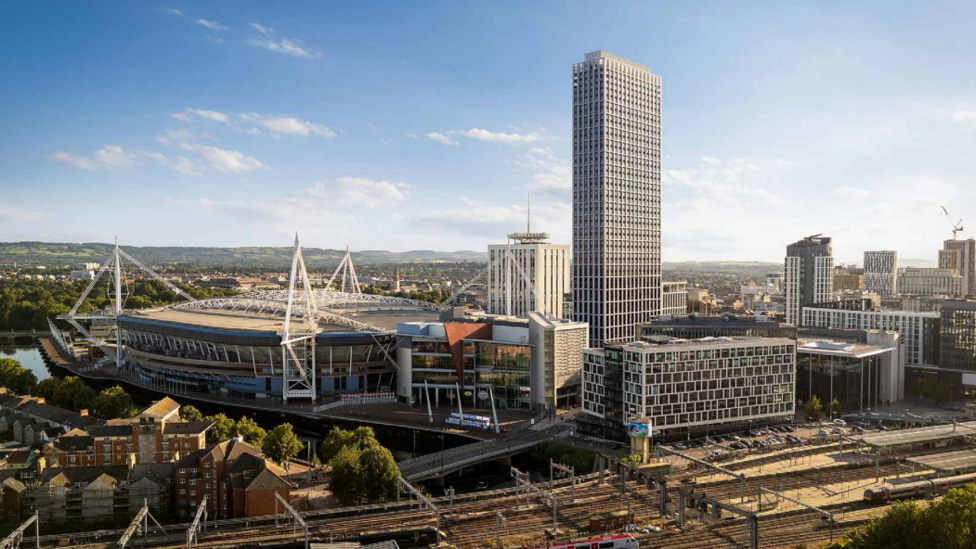In an Ambitious Architectural Vision, Cardiff Plans a Skyscraper to Rival the UK's Tallest
On August 7, 2025, an ambitious proposal was unveiled for a monumental skyscraper in Cardiff, signaling a bold leap into the future of urban architecture in Wales. This proposed 50-story building, slated to soar 180 meters into the sky, promises to redefine the Cardiff skyline, positioning itself as the tallest structure in Wales and potentially ranking as the third tallest in the United Kingdom.
The visionary project not only aims to enhance the aesthetic appeal of Cardiff but also seeks to become a significant catalyst for economic growth in the region. Featuring a design that would tower over the famed Principality Stadium nearby, this skyscraper embodies the spirit of innovation and modernity that Wales aims to project on the global architectural stage.
While the proposal is still subject to approval, the implications of its realization could be profound. It may help invigorate the local economy, attract businesses, and boost tourism. Cities around the world have experienced revitalization through iconic structures that serve as landmarks. The tower in Cardiff, if brought to fruition, could be the centerpiece that elevates Wales’s reputation beyond its borders while simultaneously contributing to urban development.
The project speaks to a broader trend in the UK, where cities have embraced vertical expansion as a way to meet the challenges of urbanization, such as housing shortages and increased demand for commercial spaces. To contextualize this ambitious plan, we can consider the tallest existing buildings in the UK. Presently, The Shard in London holds the title as the tallest building at 310 meters, followed by Bishopsgate Tower and 22 Bishopsgate. Notably, the tallest building outside of London is The Deansgate Square South Tower in Manchester, reaching 201 meters.
Over in Scotland, the Glasgow Tower stands at 127 meters, recognized for its unique ability to rotate 360 degrees—an innovative feat making it a noteworthy tourist attraction. Northern Ireland is home to the Obel Tower, which, while not a skyscraper by standards of height, still impresses with its 85-meter stature and 28 stories, marking it as a significant part of the Belfast skyline.
The proposed Cardiff skyscraper will not only elevate Wales’s architectural profile but could also shift perceptions of regional identity. For years, Wales has been characterized by its historical and cultural landmarks, but the advent of such a modern structure could invite a newfound narrative—one that champions progress, innovation, and the ambition to compete on a global scale.
The bold plans come amidst a larger backdrop of economic recovery and urban renewal following the disturbances of the COVID-19 pandemic. As cities globally pivot to accommodate a new normal, the ambitious architectural pursuits are often seen as beacons of hope and resilience. Projects like the Cardiff skyscraper could symbolize a collective aspiration for economic revitalization, improved infrastructure, and community appeal.
As we consider the merits and potential impacts of this project, it is essential to acknowledge the implications of such bold architectural endeavors. Historically, skyscrapers have been catalysts for change, often bringing both opportunity and scrutiny. Stakeholders will need to engage with a variety of interests, including businesses, local communities, and environmental concerns, to ensure that the development aligns with the broader vision for Cardiff and Wales.
In conclusion, the announcement of a towering skyscraper in Cardiff is more than just an architectural proposal; it is a bold statement about the future directions of urban development in Wales. As the project moves through the planning stages, it holds the potential to transform Cardiff into a landmark city in the UK and a vibrant center of commerce and culture.
Tags: #RealEstateNews, #EconomyNews, #Wales

